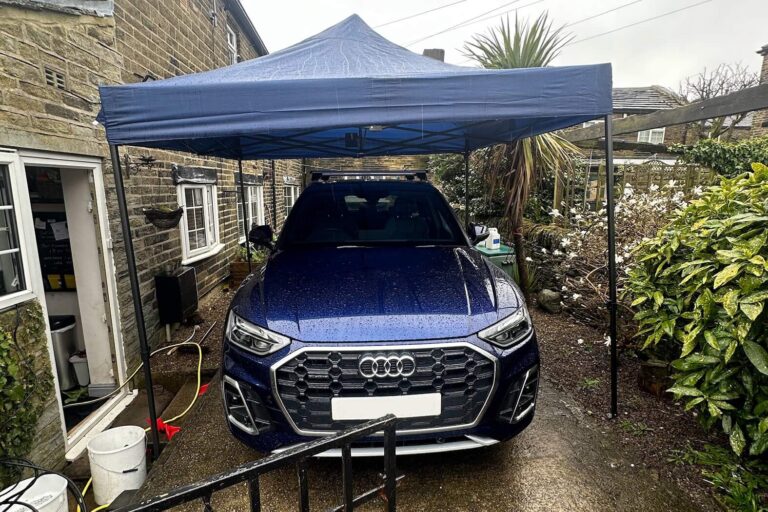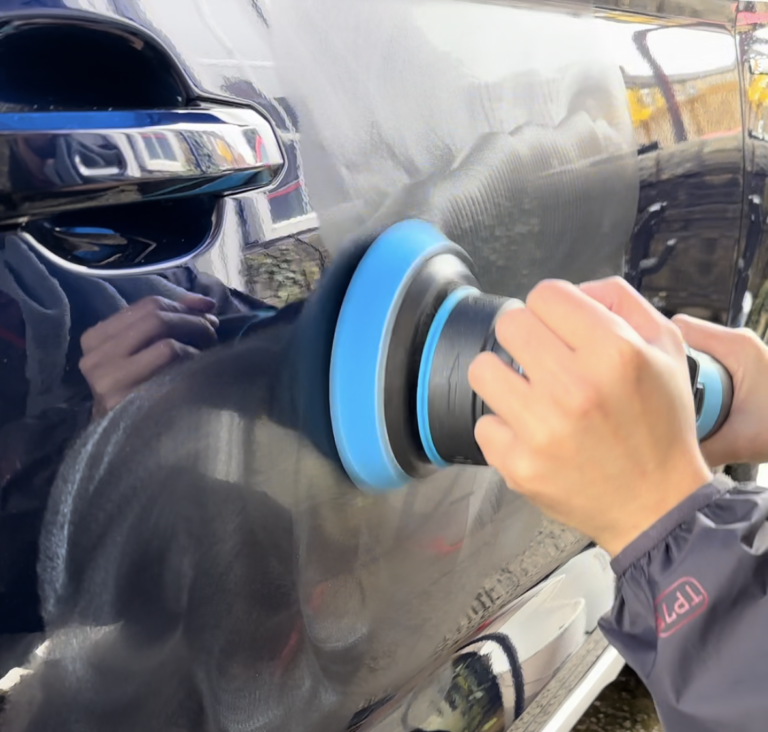New car ownership is often an exciting experience but it can also feel like navigating a minefield when it comes to keeping it in pristine condition. With so many products, techniques, and conflicting advice out there, it can be overwhelming to know where to start with new car detailing.
This guide will help demystify and simplify the process, helping you understand the Do’s and Dont’s. This guide wille’ll break down everything you need to know to keep your new car looking as good as the day you drove it off the forecourt.
What is a new car detail?
A new car detail usually refers to a thorough cleaning and detailing process done on a brand new car to enhance its appearance and protect its surfaces.
Many people assume that because a car has come straight from a dealership the paintwork is in mint condition. However, when a car is transported from the factory, it can pick up impurities which need to be cleaned. If the dealership does decide to wash the car, they sometimes do not use techniques that prevent scraching.
A new car detail, can help decontaminate, remove any damage or scratches and seal and protect a new car.
Is it worth detailing a new car?
Detailing a new car is something that can be very beneficial short-term and long-term with new car ownership. Although new cars arrive straight from the factory when being transported and stored they can collect dirt and contaminants on their paintwork. A new car detail can ensure that that brand-new paintwork is pristine.
Detailing also provides protection for all areas of the car including the paint of your car. Detailers can apply a sealant or ceramic coating to the paint which protects it against environmental issues like UV rays, bird droppings and tree sap.
Although almost all new cars are very clean and shiny from factory, many may fade faster if not well taken care of. Regular detailing keeps the brilliance of the paint and the interior of your car in order. Having your car regulary cleaned by a professional can also prevent swirl marks or light scratches.
A well-maintained car that has a regular detailing will fetch a better resale price. It shows potential buyers that the car has been looked after properly, inside and out. Overall, detailing a new vehicle is all about not only how it looks now, but also keeping the value high in the future.
How do you wash/clean a new car?
Like you would any other car, albeit with a bit more caution and preparation to ensure you don’t scratch the paintwork.
- Clean the wheels first, they are the dirtiest part of the car usually. Use ph neutral wheel cleaner and minimise contact as much as possible. Rinse with a power washer.
- Apply a pre-wash to the paintwork of the car, and then cover with a touchless snow-foam. Allow to dwell for around 5 minutes, then rinse the car.
- Using 2 or more buckets, use a ph balanced car shampoo with high lubrication to contact wash the car, starting with the top and working down (only work in straight lines to not ‘buff’ the paint). Ensure you rinse the microfibre mitt with the spare bucket of water for each panel.
- Final rinse of the car and dry with plush large microfibre with detailing spray or sealant to aid drying.
This is a basic maintenance wash that is recommended for when cleaning a new car to minimise damage and maximise cleaning.

Should I wax my new car?
Applying wax or any other sealant to a car is definitely recommended for a new car that may not have any form of protection on the paintwork. Although cars do have a clear paint coat on the top of their paint, this is usually quite easy to scratch/damage through normal cleaning methods. Waxes and sealants such as ceramic coatings can be applied to paintwork to provide an extra layer of protection against road dirt and grime.
It is recommended when applying a wax that the car has been cleaned and had contaminants removed from any paintwork (note even new cars can become contaminated after minimal road use). The waxes and saints applied can be topped up regularly to keep their hydrophobic properties and keep the car protected.
Which polish should I use on a new car?
Depending on what you are trying to accomplish with a polish depends on the suggested type of polish that you can use.
- Swirl/scratch removal – Paint correction polishes utilised with a dual-action polisher can remove small amounts of clear coat paint that have scratches, swirls and imperfections on to make paint look brand-new. They contain abrasive material that helps remove damaged clear coat.
- Aesthetics/gloss – Some polishes are designed to provide a top layer of gloss or shine, these don’t usually remove damaged clear coats but can cover up and fill some scratches. However, some are just for a final layer of protection or gloss and can be beneficial after paint enhancement/correction.
What to avoid when you get a new car
Depending on how much you care about your car’s appearance there are a number of things to avoid when maintaining a car.
- Local hand and automatic car washes. Although there are some places that may not damage paintwork. Many hand car washes use the same cloths and wash mitts for every car without rinsing. This can basically wipe dirt and contaminants over your new paintwork and cause scratches and damage.
- Don’t use harsh, strong cleaners or high-pressure power washers initially. New car’s paintwork may not be fully cured and this can damage paint permanently.
- You don’t need to apply wax or sealant to a car straight-away. There will often be some sort of wax or sealant applied to the car from the factory. This may also hinder paint curing.
Should I clay bar a new car?

Clay barring a car is to remove contaminants that have bonded to the paintworks surface that are hard to remove. As new cars, often haven’t been used for long periods of time. It’s not recommended to use a clay bar on a new car.
There may be circumstances where a new car has been contaminated and will need clay barring. However. It is important to be careful with clay as with many clay barring processes, it can result in micro marring of paintwork and is often followed by some form of paint correction.
North Detailing
At North Detailing, one of the leading car detailers and ceramic coating installers in bradford we don’t just detail cars; we take care of your pride and joy in the best way. Some might consider detailing to be an extravagance, but we view it as another investment in the longevity of a vehicle, further reflecting its quality and your commitment to taking care of important things.
Our competent team thus respects the character of each vehicle we deal with, knowing that each car comes with its own story. We serve with this being the mission: a story really alive and credible from the day it started.
By Tom Kelly North Detailing